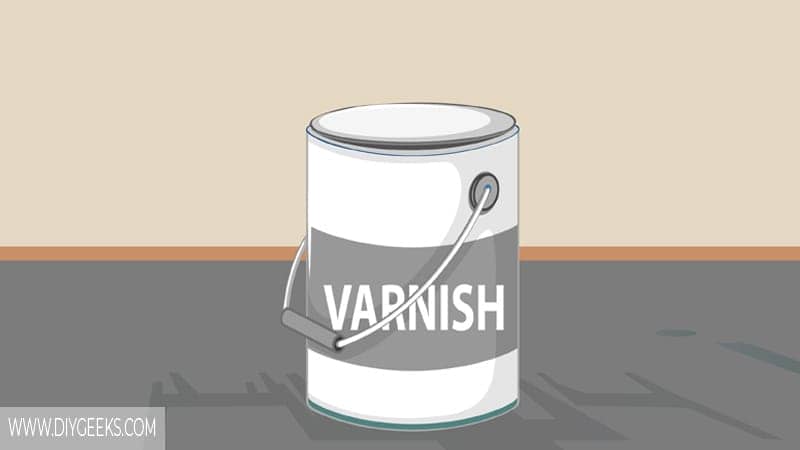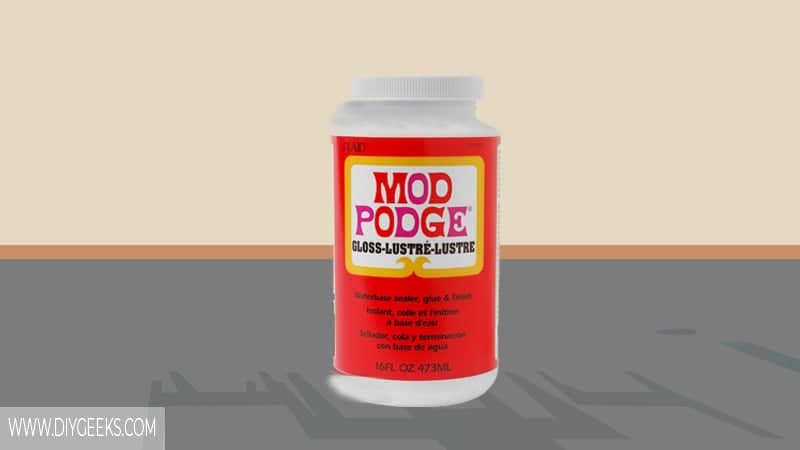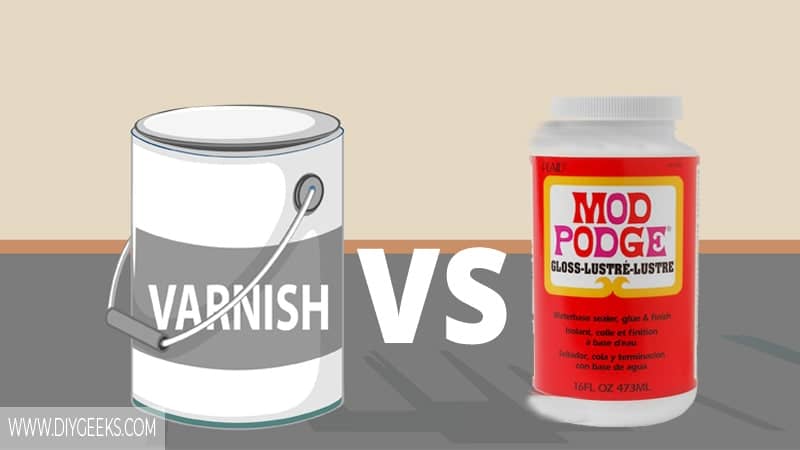Varnish is a protective coating that protects the underlying surfaces from moisture, water, or scratches. Mod Podge is a glue-like finish that glues two materials together and creates a low protective finish over the surface.
Varnish offers better moisture resistance and surface protection than Mod Podge. Mod Podge adheres over surfaces better and is easier to apply than varnish.
What is Varnish?

Varnish is a transparent (or colored) protective coating applied over several surfaces to protect them from water, moisture, scratches, and weather elements.
It forms a glossy moisture-resistant layer that prevents water penetration. Varnish is usually applied over stained or painted surfaces to protect them from different elements.
There are several varnish types that each have a unique feature, but all of them will protect a surface.
What is Mod Podge?

Mod Podge is a PVA-formulated paste that glues two materials together and forms a dry and textured finish over the surface.
It’s available in different sheen finishes; from matte to high-gloss sheen. Mod Podge is mainly used to seal paper cutouts that are adhered to the surface and create a smooth finish.
Is Mod Podge a Varnish?
Mod Podge isn’t a varnish type, but it contains a small varnish amount on its formula that allows it to cover and seal wood surfaces.
While Mod Podge can seal surfaces too, its protective level is much lower than varnish and its finish will get removed if exposed to constant water or moisture.
Varnish vs Mod Podge
The differences between varnish and Mod Podge are listed below.
Moisture-Resistance
Varnish has better moisture-resistant qualities than Mod Podge as it has a glossy finish that prevents water penetration.
Exterior Mod Podge has low moisture-resistant qualities and can protect surfaces from a low water amount.
Finish Type
Varnish creates a glossy transparent (or colored) hard finish that reflects light and highlights the underlying surface texture.
Mod Podge creates a dry textured finish that doesn’t reflect light or highlight surface imperfections.
Viscosity
Mod Podge has a thicker viscosity than varnish has it comes in a paste form that creates a thick finish. It’s formulated with several additives and solvents that make its viscosity thicker.
Varnish has a thinner viscosity and you can thin it with mineral spirits.
Protection Level
Varnish protects surfaces better than Mod Podge as it creates a moisture-resistant layer (barrier) that protects surfaces from water, scratches, and moisture.
Mod Podge offers low surface protection as it’s designed to glue two materials together and not protect surfaces.
Adhesion
Mod Podge has better surface adhesion than varnish as it’s technically a glue.
Varnish has good surface adhesion as it’s a topical finish that can adhere over stained, painted, or sealed surfaces without having to penetrate the surface pores.
Application
Varnish is harder to apply than Mod Podge as you must prep the surface before applying it which includes cleaning, sanding, and priming. You can apply Varnish with a bristled paintbrush.
Mod Podge is easier to apply as it has impressive adhesion qualities and adheres over all surface types. You can apply Mod Podge with a flat tool.


